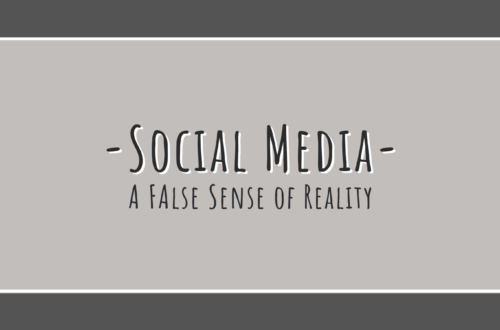Technology: A Help or A Hindrance?
So in my class these last few weeks, we’ve been working on a persuasive essay. I hate essays and writing papers. They are the worst! But I’d like to share this one that I wrote and then a little more insights that I have as well. It’s not the greatest, because I hate writing for school.
(I’m so ready for next semester…math!)
Modern technology is simply an advancement of old technology and it advanced so rapidly that society scarcely noticed the significant impact that it has created. It began with the advent of the radio in the early 1900s, and then with the television (TV) in the 1950s. In 1969, the United States NASA program launched a rocket to the moon, landed astronauts on the moon, and returned them safely back to Earth using less computational power than what is found in today’s smart phone. That is remarkable but society now relies heavily on communication, information, and transportation technology to make life faster and more efficient. With this increase of modern technology, has society become too dependent? Is the development of the younger generation being hindered by this increased exposure to modern technology?
With all things, there are advantages as well as disadvantages and there are many benefits to the increase of modern technology. Some of these benefits include easy access to information, improved communication, improved entertainment, and social networking. There are, however, disadvantages that include a decreasing amount of direct interpersonal communication as a result of increased use of social media and text messaging, and young children relying heavily on technology for the majority of their play, causing possible development delays.
The conversation of technology and its impact on society’s development is not new; however, with the invention of the Internet and compact portable devices (e.g. cellular smart phones and tablets), technology’s influence is now everywhere. Many studies have been performed to determine whether technology is simply a distraction to children, or if technology is actually impeding a child’s development. One impediment is the evolution of interactive and realistic technology-based experiences, such as Role-Playing Games (RPG) and interactive social media sites. According to a research study performed by Judith Van Evra, a psychologist in Mental Health Care, “technology advances have led to slick and evocative productions in which reality and fantasy are mingled and often indistinguishable.“ A Ph.D graduate from Stanford University conducted a survey of 30,000 gamers that discovered from those surveyed, “nearly 40% of men and 53% of women who play online games said their virtual friends were equal to or better than their real-life friends.” More and more information seems to be pointing out that technology is more than just a distraction to young children. Another study that shows that 12% of boy and 8% of girl video game players exhibit pathological patterns of play, and fit the Diagnostic and Statistical Manual of Mental Disorders (DSM) category of addiction. This study also shows that pathological gamers are twice as likely to have ADD or ADHD (Gentile D 2009). As you can see, young people are affected greatly and continue to be increasingly infused with all types of media and technology.
It seems that a decade ago, children were more interested in playing outside, riding bicycles, playing sports, building forts and scraping their knees. Children back then didn’t require costly equipment or even parental supervision. Family dinners were full of conversations about what went on during the day, now home cooked meals around the dinner table are far less frequent. On top of that, instead of being engaged in conversations with one other, people of all ages are more enthralled with what’s happening on their technological devices. This can be witnessed just about anywhere. It is also evident that children are relying more on technology for their play and entertainment. Children ranging from 0-2 spend 2.5 hours per day occupied by technology, children ages 3-5 spend 4.5 hours per day, and elementary aged children use roughly 7.5 hours of entertainment technology (i.e. TV, video games, cell phones, internet, etc.) per day. Out of these elementary aged children, 75% have devices in their bedrooms (Kaiser Foundation Report 2010). These finding are also causally linked to developmental delays in children (Christakis D). The impact of rapidly advancing technology on the developing child has seen an increase of physical, psychological and behavior disorders that the health and education systems are just beginning to detect, much less understand. Child obesity and diabetes are now national epidemics in both Canada and the U.S., causally related to technology overuse. Diagnoses of ADHD, autism, coordination disorder, developmental delays, unintelligible speech, learning difficulties, sensory processing disorder, anxiety, depression, and sleep disorders are associated with technology overuse, and are increasing at an alarming rate.
Society will continue to gravitate towards a more technological state. It makes things easier, faster and more efficient. Society needs to be more conscious of how technology is affecting the younger generation. More tests and studies also need to be conducted to determine exactly how children are being affected, both positively and negatively. Technology shouldn’t be used as a means to distract kids from other activities in order to give their caregiver a break. Children should be encouraged to actually go outside and play, ride bikes, and develop their creativity and imagination. There is more to life than what is found on a TV, smartphone or tablet. Let’s not allow our children to get trapped in the world of modern technology and ever glowing screens.
It’s always interesting to see other families when Scott and I go out for dinner. Just the other day we went to California Pizza Kitchen and as we were leaving, we passed by this family. There were two boys, probably in elementary school, playing on their tablets and all the older kids or adults were focused on their phones. What an interesting family dynamic we have been slowly warped ourselves into. Our use of technology should have more thought put into it, especially when it is affecting our young children. Conversations should be made face-to-face and with eye contact, not the half listening, nodding while scrolling your Facebook or Instagram feeds. I personally don’t want my future children spending immense amount of time staring at a screen. There are so many better things to do; going to the park, sports, swimming, hiking, bike riding, imagination, painting, coloring, reading. Or would you rather your kids doing this; Xbox, Playstation, Nintendo, Wii, Candy Crush, Mind Craft, World of Warcraft, Snapchat, YouTube, texting instead of calling, etc. Which do you think will help your child the most in their quest of development? Are you helping them to achieve greatness? Or are you holding them back without even realizing it? (A really good read here)
Steve Jobs, the master behind iPhones and iPads, did you know that he didn’t even allow his own children to use iPads? (read the little article here)
He said, “My kids accuse me and my wife of being fascists and overly concerned about tech, and they say that none of their friends have the same rules… That’s because we have seen the dangers of technology firsthand. I’ve seen it in myself, I don’t want to see that happen to my kids.”
Our society is addicted to technology and social media. Can you go a day, let along a week, without using social media and these mind numbing games? Let’s try and strengthen the relationships around us by having real interactions! Going out to lunch, inviting another couple over to dinner, sit down and have a real conversation. Let’s get to know each other on a more personal level.



You May Also Like

Social Media – A False Sense of Reality
October 14, 2014
The Biggest Thing I’ve Overcome…
September 19, 2014